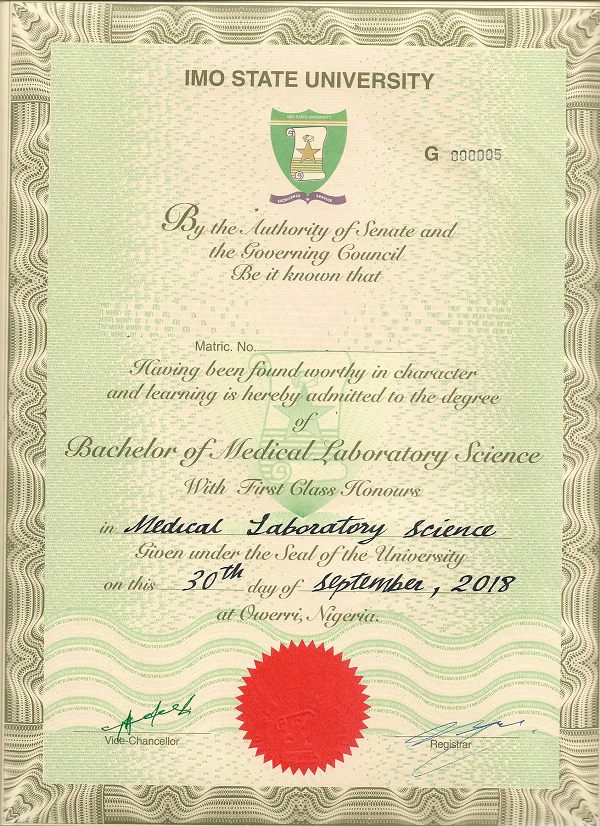Accountancy
Problems, Concerns And Issues That Affect The Operations And Performance Of Small And Medium Scale Enterprises {SMES} In Nigeria
- /home/imsuinfo/public_html/wp-content/plugins/mvp-social-buttons/mvp-social-buttons.php on line 27
Warning: Trying to access array offset on value of type bool in /home/imsuinfo/public_html/wp-content/plugins/mvp-social-buttons/mvp-social-buttons.php on line 27
&description=Problems, Concerns And Issues That Affect The Operations And Performance Of Small And Medium Scale Enterprises {SMES} In Nigeria', 'pinterestShare', 'width=750,height=350'); return false;" title="Pin This Post">
- Share
- Tweet /home/imsuinfo/public_html/wp-content/plugins/mvp-social-buttons/mvp-social-buttons.php on line 69
Warning: Trying to access array offset on value of type bool in /home/imsuinfo/public_html/wp-content/plugins/mvp-social-buttons/mvp-social-buttons.php on line 69
&description=Problems, Concerns And Issues That Affect The Operations And Performance Of Small And Medium Scale Enterprises {SMES} In Nigeria', 'pinterestShare', 'width=750,height=350'); return false;" title="Pin This Post">
Abstract
This study investigated problems, concerns and issues that affect the operations and performance of Small and Medium Scale Enterprises {SMES} in Nigeria. The study employed Simple Random Sampling {SRS} method in selection of the sample for the study. The types of data used for this research work include both primary and secondary data. The researcher based the population of this research work on the entire small scale industries in Nigeria. While the sample size is Ilorin South Local Government, Kwara State. This is an investigative study of the financing of small scale industries in Nigeria. The Small Scale Enterprises in Ilorin South Local Government as a case study means that the study of this research was based strictly on all the enterprises in question and the findings could be applied to all the SMEs in Nigeria. The main research instrument used in gathering the necessary data for this study is the questionnaire, which was well structured and clearly worked for easy understanding, and to avoid errors commonly associated with type of instrument when used by some researchers. For the purpose of this study efforts is been made to make use of Simple Random Sampling so as to eliminate any element of biasness. The primary data used for this research is collected through the use of questionnaire. While the secondary data is gathered through the review of works of previous researchers work, journals, CBN publication, and research publication. The statistical techniques used in the analysis of the data for this research include frequency distribution, the standard deviation, the distribution of means, pie chart, analysis of variance (ANOVA), chi-square, etc. The chi-square test statistic and the distribution of means were used in the testing of the hypotheses. The findings shows that five major problem areas facing SMEs in Nigeria in the following order of their descending intensity: management problems, access to finance/capital, infrastructural problems, government policy inconsistencies and bureaucracy and environmental factors related problems. Based on the fndings, it was recommended among others that government should create an enabling environment that is appreciably devoid of corruption and bureaucracy, and at the same time, motivating and entrepreneurially friendly. It has to be a two-pronged approach for the government efforts to be effective in recreating conducive environment in which SMEs can thrive and blossom.
CHAPTER ONE
INTRODUCTION
1.1 Background of the study
Small and Medium Enterprises {SMEs} as defined by the Central Bank of Nigeria, in its credits guidelines to banks, state that in the case of Commercial Banks, refer to business enterprises whose annual turnover not exceeding N500,000. In case of merchant Banks, they are enterprises with capital investment not exceeding N2 million {excluding cost of land} or with maximum turnover not more than N5 million (CBN 1993). The need for finding sources to provide adequate supply of fund is a prime concern to management of small scale enterprises and in particular where to obtain the fund.
A lot has been said and written about SMEs the world over. It has also formed the subject of discussions in so many seminars and workshops both locally and internationally. In the same token, governments at various levels (local, state and Federal levels) have in one way or the other focused on the Small and Medium Enterprises. While some governments had formulated policies aimed at facilitating and empowering the growth and development and performance of the SMEs, others had focused on assisting the SMEs to grow through soft loans and other fiscal incentives.
International Agencies and Organizations (World Bank, United Nations Industrial
Development Organization (UNIDO), International Finance Corporation (IFC), United
Kingdom Department For International Development (DFID), European Investment Bank (EIB) etc are not only keenly interested in making SMEs robust and vibrant in developing countries but have also heavily invested in them. Locally, the several NonGovernmental Organizations such as Fate foundation, Support and Training
Entrepreneurship Programme (STEP), the Nigerian Investment Promotion Commission (NIPC), the Association of Nigerian Development Finance Institutions (ANDFI), as well as individual Development Finance Institutions (DFIs) have been promoting the growth of SMEs in Nigeria through advocacy and capacity-building initiatives, and have continued to canvass for better support structures for operators in the SME sub sector (Basil, 2005).
All the massive attention and support given to SMEs relate to the widely acclaimed fact that SMEs are job and wealth creators. In justifying the introduction of SMIEIS in 2003, the then Governor of the Central Bank of Nigeria, Chief Joseph Sanusi said “With a concerted effort and renewed commitment from all stakeholders, this scheme will surely succeed and realize its intended objective of revamping the SMEs as engines of growth in the economy and a veritable tool for the development of indigenous technology, rapid industrialization, generation of employment for our teeming youths and the pivot for sustainable economic development in Nigeria” (Anyawu, 2003).
It has however been worrisome that despite the incentives, policies, programmes and support aimed at revamping the SMEs, they have performed rather below expectation in Nigeria. Different people, organizations, and operators have advanced various reasons as to why SMEs have not been able to live up to their billing. While an average operator would always hinge his failure on lack of access to finance, some others think otherwise arguing that inappropriate management skills, difficulty in accessing global market, lack of entrepreneurial skills and know how, poor infrastructure etc are largely responsible (Ekpenyong, 1992).
The Association of Nigerian Development Finance Institutions (ANDFI) in 2004 issued this statement in relation to why SMEs perform poorly in Nigeria: “Finance is usually considered as the major constraints of SMEs. While this may be true, empirical evidences have shown that finance contributes only about 25 percent to the success of SMEs. Thus, the creation of other appropriate support system and enabling environment are indispensable for the success of SMEs in Nigeria”.
Other challenges and problems, which frustrate SMEs in Nigeria and make some of them to either die within their first two years of existence or perform below standard even after surviving in their early years abound. The key ones include inadequate infrastructural facilities (road water electricity etc), insecurity of lives and property, inconsistent monetary, fiscal and industrial policies, limited access to markets, multiple taxation and levies etc (Olorunshola, 2001).
1.2 Statement of the problem
Small and Medium Enterprises {SMEs} in Nigeria have not performed creditably well and hence have not played the expected vital and vibrant role in the economic growth and development of Nigeria. This situation has been of great concern to the government, citizenry, operators, practitioners and the organized private sector groups. Year in year out, the governments at federal, state and even local levels through budgetary allocations, policies and pronouncements have signified interest and acknowledgement of the crucial role of the SME sub-sector of the economy and hence made policies for energizing the same. There have also been fiscal incentives, grants, bilateral and multilateral agencies support and aids as well as specialized institutions all geared towards making the SME sub-sector vibrant.
Just as it has been a great concern to all and sundry to promote the welfare of SMEs, it has also been a great cause of concern to all, the fact that the vital sub-sector has fallen short of expectation. The situation is more disturbing and worrying when compared with what other developing and developed countries have been able to achieve with their SMEs. It has been shown that there is a high correlation between the degree of poverty hunger, unemployment, economic well being (standard of living) of the citizens of countries and the degree of vibrancy of the respective country’s SMEs {Ekpenyong; 1992}.
In spite of the fact that SMEs have been regarded as the bulwark for employment generation and technological development in Nigeria, the sector nevertheless has had its own fair share of neglect on the economy. In a seminar titled “Industrial Financing in Nigeria: Problems and Prospects”, Olorunshola {2001}, identified in his paper the following as the main problems of SMEs, which are however not insurmountable: constrained access to money and capital markets, poor infrastructural facilities, low level of entrepreneurial skills, poor management practices, inadequate equity capital, high rate of enterprise mortality, shortages of skilled manpower, multiplicity of regulatory agencies and overbearing operating environment, societal and attitudinal problems, integrity and transparency problems, restricted market access, lack of skills in international trade; bureaucracy, lack of access to information given that it is costly, time consuming and complicated at times.
The problem and challenges that SMEs contend which are enormous but it is curious to know that some SMEs are able to overcome them. This gives hope and should provide a basis for optimism that there is a way out.
1.3 Justification of the study
The important of small scale businesses cannot be over emphasized especially in the third world countries in which Nigeria is one. In light of this Ogunleye (2004), posits that SMEs have the potentials to;
- Supply potential entrepreneurs
- Create employment opportunities
- Mobilize local resources
- Mitigate rural-urban migration
- Distribute industrial enterprises
Inspite of the potentials, SMEs in the country are still facing financing challenges. Many of them have either gone under or at best performing below their potential contribution. This study therefore focused on the fundamental problems militating against their ability to accessing relevant funding inspite of the various programme of governments at all levels to promote the growth of SMEs in the country.
1.4 Objectives of the study
This research is thus intended to identify all the problems, challenges, and constraints militating against the financing of SMEs and also make appropriate recommendations for readdressing and eliminating them so that the SMEs could occupy their pride of place in the Nigerian economy and hence play the vital role they are expected to play in the economic growth and development of Nigeria.
The overall objectives of this study is to identify the major problems which have militated against the financing of Small and Medium Enterprises and prospects so that they {SMEs} can play the expected vital role as the engine of growth in our economic development efforts. In order to achieve this, the study will attempt the following;
To identify the major problems, challenges and constraints, which have militated against the SMEs from playing the vital role in the Nigerian economic growth and development; many SME promoters are claiming that the government is not doing enough to encourage, stimulate and protect the Nigerian SMEs. Some observers think that the problem is with the promoters and managers of the SMEs.
To make appropriate recommendations for solving or at least alleviating the identified problems of finance facing small scale industries in Nigeria. The study will attempt to identify all the challenges and militating factors against the success of SMEs, analyze them and then proceed to make appropriate recommendations towards alleviating them. It is said that a clear and precise definition of a problem represents half the solution – hence, identifying the key problems of the SMEs would lay a solid foundation for mitigating if not solving them outrightly.
1.5 Hypothesis of the study
In order to enable the study confirm the greatest drawback for SMEs in Nigeria and fully appreciate their respective relevant significance, the study will postulate the following hypothesis:
Ho: Access to finance/capital does not represent the greatest problems confronting SMEs in Nigeria.
Hi: Access to finance/capital represents the greatest problems confronting SMEs in Nigeria.
1.6 Scope of the study
The study will focus on financing of small scale industries problems and their prospects. Ilorin South Government Area of Kwara State will be used as sample for the propose study; being one of the major area where many small scale enterprises are situated like shoe maker, painting, food vendors, pharmaceutical, supermarket etc.
1.7 Definition of terms
FINANCE: Is described as the provision of money when and where it is needed.
LOAN: Is a certain sum of money borrowed
SMIEIS: Small and Medium Industries Equity Investment Scheme
COLLATERAL: It is described as the asset used for the purpose of guaranteeing the amount collected that is, any negligence the lender will impound it for debt recovery.
FINANCIAL INSTITUTION: The Central Bank of Nigeria defines it as the only financial institution established and charged with the day to day management and control of the nation’s monetary affairs, the supervision and co-ordination of banking and financial activities of the country.
Pages: 48
Category: Project
Format: Word & PDF
Chapters: 1-5
Source: Imsuinfo
Material contains Table of Content, Abstract and References.
await loadScriptWithTimeout(scriptUrl, TIMEOUT_MS); } catch (_) {} })();
-

 IMSU News4 years ago
IMSU News4 years agoIs It Worth Registering a Pre-degree Program In IMSU? All you need to know about IMSU Pre-degree
-

 IMSU News5 years ago
IMSU News5 years ago7 Popular department in Imo State University (IMSU)
-

 IMSU News2 years ago
IMSU News2 years agoIMSU reprinting for 2023/2024 post UTME candidates has commenced
-

 IMSU News4 years ago
IMSU News4 years agoSteps on How to Apply for Certificate in Imo State University, Owerri (IMSU)

